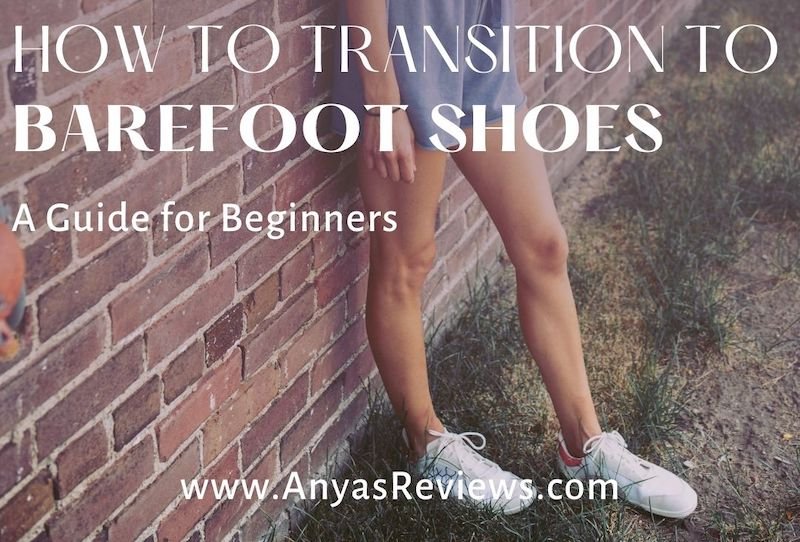
Transitioning to barefoot shoes is a process and will look different for every individual, but my #1 piece of advice is to start wearing barefoot shoes for only short periods at a time. See how you feel, and then slowly increase that time over weeks & months.
Zero drop shoes with a natural toe box make it possible to move naturally, but many people have weak intrinsic foot muscles and learned unnatural gait patterns (heavy heel striking for example) that carry over even in barefoot shoes. So you’ll have the best results if you consider other ways to improve your overall gait and foot health in addition to wearing better shoes.
Here are additional tips for transitioning to barefoot shoes:
- Add foot exercises such as these to your daily routine.
- Go completely barefoot often to naturally relearn functional movement
- Add texture to your indoor environments to stimulate the nerves in your feet
- Don’t be afraid to swap back and forth between your new barefoot shoes and your older supportive shoes.
- Consider a beginner barefoot shoe brand if you are uncomfortable in thin, minimalist soles. Insoles are also a good option.
- Remember it takes time for your body to adapt!
It might take several weeks, months or years for your muscles, ligament, nerves, and skin to adapt to the new stresses of being in barefoot shoes. This is why going slowly and carefully is often the best path. Give your brain and your body time to relearn how to be comfortable barefoot, and remember to walk before you run!
Barefoot shoes may not always feel comfortable as you walk and move around. This is ok – you can alternate between barefoot shoes and your old shoes as your body adapts. If you’re just looking for toe space, without the barefoot sole- check out this list.
If you are already used to being barefoot often and are physically fit, you may be able to switch over immediately. Biggest take away: Everyone is different. Don’t push yourself past pain and listen to your body if it’s telling you to slow down!
Check out the FAQ on How To Pick Your First Pair of Barefoot Shoes to get started.
List of Resources/Professionals Who Can Help the Transition Process:
- Find Your Footing Workshop – a collaboration between myself and movement expert Petra Fisher
- Walking 101 – Tips for walking well in barefoot shoes
- Whole Body Barefoot, by Katy Bowman
- Gait Happens My Foot Function Membership & Virtual Consultation
- NorthWest Foot & Ankle Virtual Consultation
- Gait Happens Certified Practitioners
- Healthy Feet Alliance Health Directory
- Whealth Free Foot Health Program
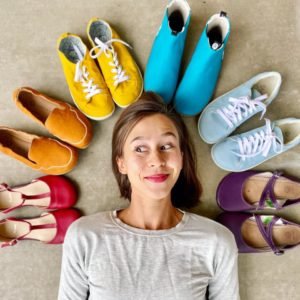

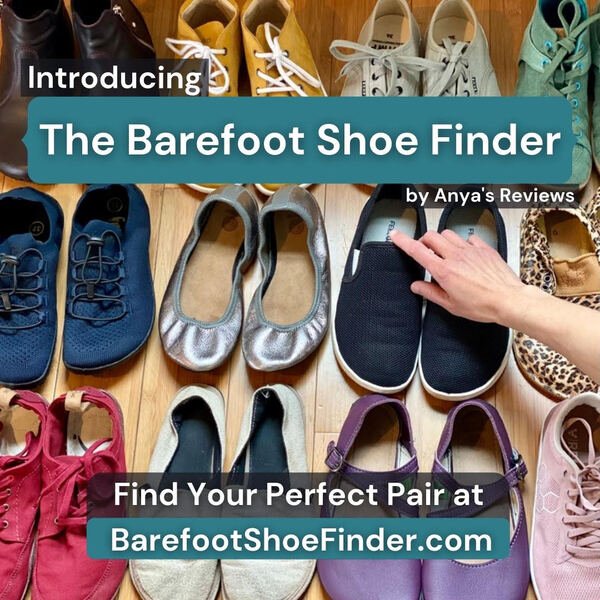
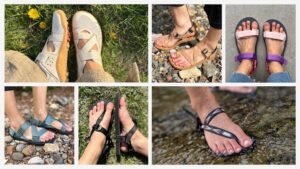
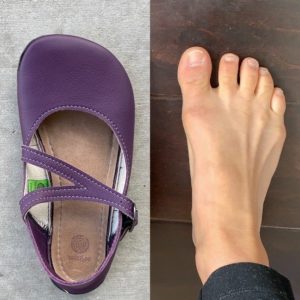


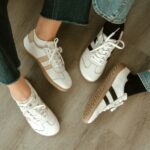




9 thoughts on “How To Transition To Barefoot Shoes?”
thank you Anya! thank you!!
I’m a British barefoot shoe wearer.
Our daughter in Canada has been following you for years and is a big advocate of barefoot shoes. I have struggled with metatarsalitis and severe foot pain for 10 years, trying orthotics and ending up wearing only Redwings workmen’s steel toe-cap boots as the toe box was wide and high.
On your site I saw a link to RED shoes, custom made by Emily Ruth Davey in Wales.
Her shoes ( and Shandals!) have transformed my life and health!
My foot pain has almost gone away now, as my wide feet have been able to spread out and my toes have lots of wiggle room. I am more stable and secure on my feet and I can walk without pain, which directly contributes to better health and fitness.
Custom shoes are expensive, but I no longer use orthotics and when I consider my improved walking and general health, (particularly important as I have diabetes), then the cost is not important. One pair of wonderful shoes worn every day is better than buying lots in the endless quest for comfort.
I am so grateful to you for your excellent site and good help and advice.
Keep on advocating for foot health!
I am so glad to hear all that, so amazing you are feeling better after such a long struggle with pain. You’ve made my day!
So, practically speaking, one would wear the minimalist foot ware for 5, then 10 then 30 minutes, etc. BUT on those same days use their regular orthotics-shoes? And ultimately the goal is to replace all the orthotic walking time with minimalist foot ware walking time?
Yes, that’s one way of doing it. Simply wear whatever you’re used to wearing the rest of time. You can see how it goes without pushing yourself toward the goal of no orthotics ever. It could take a while! Best to let your feet guide you. You want them to change, but you don’t want to overdo it.
Hi Anya,
Your blog is so inspiring! I have had a lot of musculoskeletal stuff/HSD. I also have a very sensitive nervous system, which seems to be part of the package. This is kind of weird, but my two pairs of vivos are hard to wear because they seem to prevent me from sleeping. I feel really jittery and overstimulated at night whenever I’ve worn them during the day. I am totally fine with thicker soles like Altras, though.
It sounds so weird, but I’ve tested this out a bunch of times, always with the same result when I walk for more than ~.5 mile (even on mostly grass). Have you ever heard of this happening/do you have any tips?
Thanks so much,
Clare
I have to say that this is a first for me, but if you’re seeing a pattern and know that thicker soles help you feel better then go with it! You might try desensitizing your feet with smaller amounts of texture exposure. For example, wiping your feet on carpet or standing on gravel. You might need to play around with how much exposure you can tolerate so you don’t have negative effects later, but in the long run it could help calm your nervous system response down.
Hi Clare,
I know you posted this a while ago, but wanted to recommend looking into The Wilbarger (Brushing) Protocol. In my experience, there is some overlap with HSD & sensory processing, & what you are experiencing sounds like sensory overload.
Hope this helps!
Best,
Dana
Hi Anya,
First of all, thank you so much for your site! It’s an amazing wealth of information and your shop is so handy too. I recently purchased bridge insoles from there (just waiting for them to arrive).
I have a question for you about transitioning. I’m in my 30s and previously, I wore custom orthotics or custom orthotic Birkenstocks all the time and couldn’t even walk to the bathroom at night without my birks without throbbing pain when I laid back down. These orthotics are for overpronation and metatasalgia in one foot so they have a sort of cutout where that metatarsal head is so it doesn’t have as much pressure on it. I feel like this is a stop-gap approach since the metatarsal heads on either side will take more weight but anyway. I started my journey about 5-6 weeks ago with daily exercises/stretches that you recommend and from Whole Body Barefoot, wearing correct toes whenever I can, and addressing my gait to use my glutes more. I’ve already seen improvement in foot strength, which is great! I’ve got a pair of Whitin shoes as well that I wear as I can. A few days ago, I either went too far or too fast (or both) in those shoes and now I have pain in the ball of the foot on both sides. It’s not too bad when I’m on grassy ground but walking on sidewalks is a no go and I love to walk as part of my daily movement. My question is what would you wear in this situation while it’s painful? Do I go back to birks in the house for a bit while it heals? And how about for walks outside? I still have my supportive runners and orthotics but the narrow toe box and heel lift feels awful now. Would you recommend something like Hey Dudes for the interim? I’ve looked for zero-drop cushion insoles to put in the Whitins but I can’t really find any that are available in Canada – they all have arch support and/or heel lift.
Any suggestions would be so welcome! Thank you in advance 🙂
Hi Tylar! If it were me I would go back to the Birkenstocks or find an insole to put in the Whitin’s. The Bridge Soles hopefully will feel really good in there. If you are wanting to get another pair of shoes, something like Lems or Altra can be good to swap in your rotation if your feet need a break from the thinner soles. And you can easily use insoles in those shoes too. Best of luck to you!!